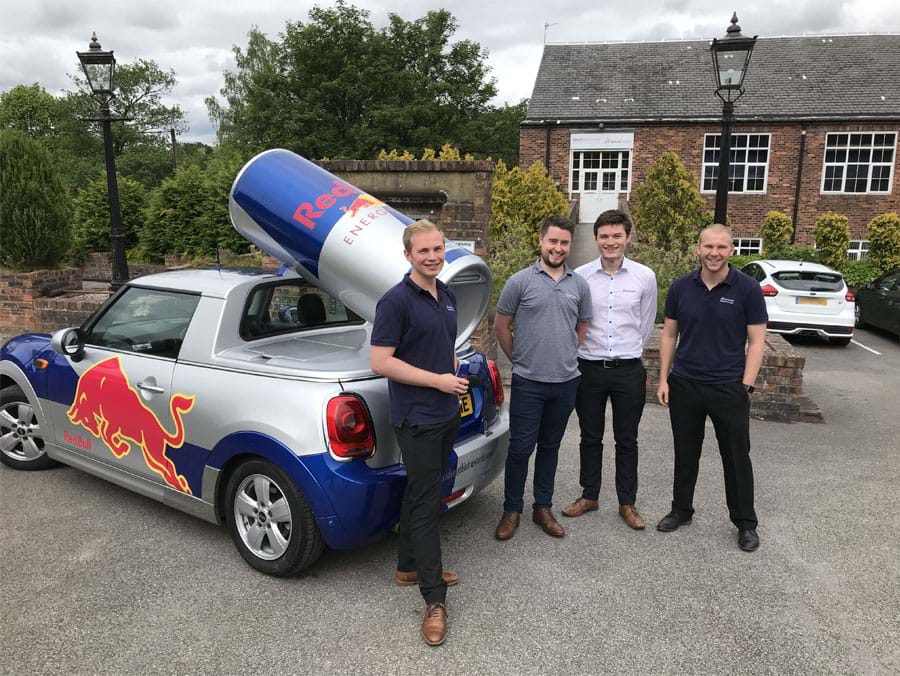Wednesday June 12, 2019 at 10:00am
Red Bull Soapbox Race 2019
On the 7th of July 2019 we will be
taking part in the Red Bull Soapbox Race at the Alexandra Palace in London. Two
of our technical interns, Ben Pavey and David Dolding, will fasten their
seatbelts and test their office-made soapbox race car, entirely created in
SOLIDWORKS. Both have been driving this project to create the chassis within
SOLIDWORKS and virtually testing it to see how it will perform down the race
track, as well as how stable it will be when it comes to the obstacles.
| Ben and David are currently studying Product Design at Nottingham Trent BSc University, where they have had their first SOLIDWORKS experience but have since developed new skills after joining Solid Solutions in August 2018. With this project, they are hoping to put their creative design and engineering skills to the test to create a full-proof chassis. SOLIDWORKS was used to create the assembly for the chassis, making sure it has a sturdy base. It was then tested in SOLIDWORKS Simulation to test the strength of key areas such as the chassis itself, steering arms and the suspension arms. Ben commented, ‘Being able to use SOLIDWORKS Simulation is a huge advantage as you are able to test real-world scenarios prior to manufacture, so you can improve your models before anything is made. | | 
|
Flow Simulation has also
been used in the creation of the chassis to calculate drag coefficient to see exactly
how streamline the car is by testing it against airflow. SOLIDWORKS Composer has been used to demonstrate the instruction
manual for the chassis, by using Composer any amendments to the design are
automatically reflected in the graphics.’
‘The chosen theme for our car was based on Tron Legacy films
and the Light Runner car that features in the movie, this is what inspired the
colour and design of the car. SOLIDWORKS Visualize made possible the visualisation of the car and how the theme
shows through it when it is all built.’, says David.
Whilst creating the soapbox car, many challenges were faced
such as the cart being overweight. This was made apparent when it was tested
within SOLIDWORKS, to change this, the team redesigned components and used different
materials to save on weight, resulting in a faster car when going down the
track. They also reverse engineered
the chassis to calculate dimensions, from lack of information from suppliers,
to help calculate and improve the design.